The Lampl family constructed a 230-head finishing unit on their 80ha farm near Munich in 2015.
The fully-automated shed cost in the region of €800,000 to construct and supply with water, solar panels and electricity.
It was an enormous cost, but the Lampl family believe it was a worthwhile investment given their ability to add value to each animal that passes through the shed by selling the beef in their family butcher shop – Lamplhof.
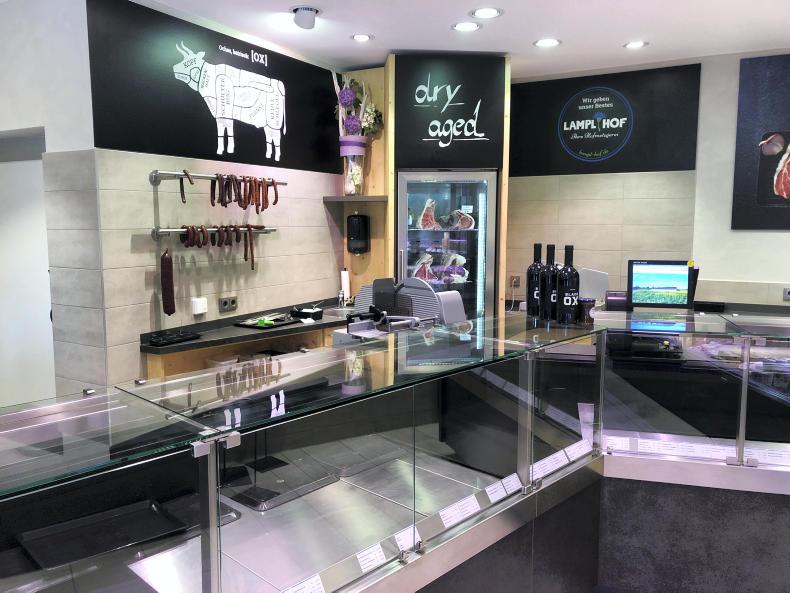
Overview
The shed has a maximum capacity of around 230.
At present, it is filled with 100 continental Limousin and Charoais bulls and 130 Fleckvieh oxen (bullocks).
The bulls will be sold to the factory for slaughter, but the bullocks will be slaughtered as the beef sold through the family butcher shop.
Three to four animals per week are slaughtered to satisfy demand in the shop.
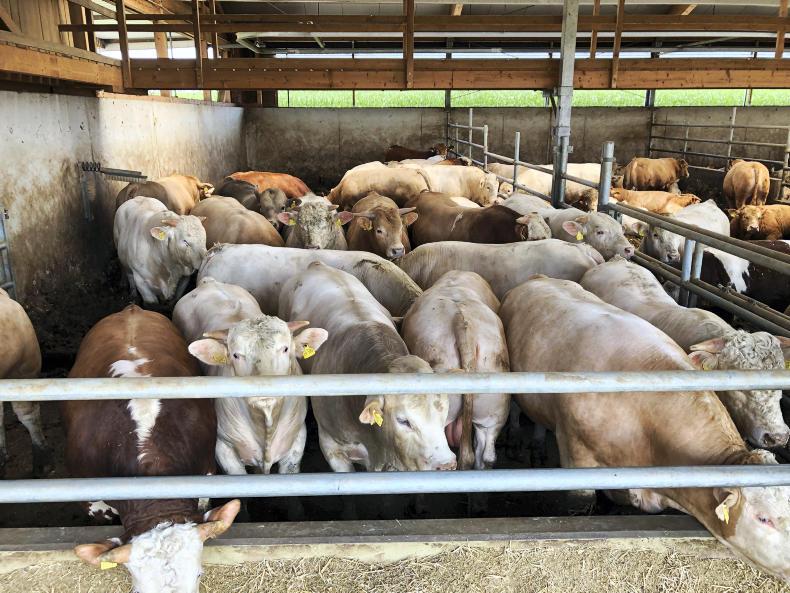
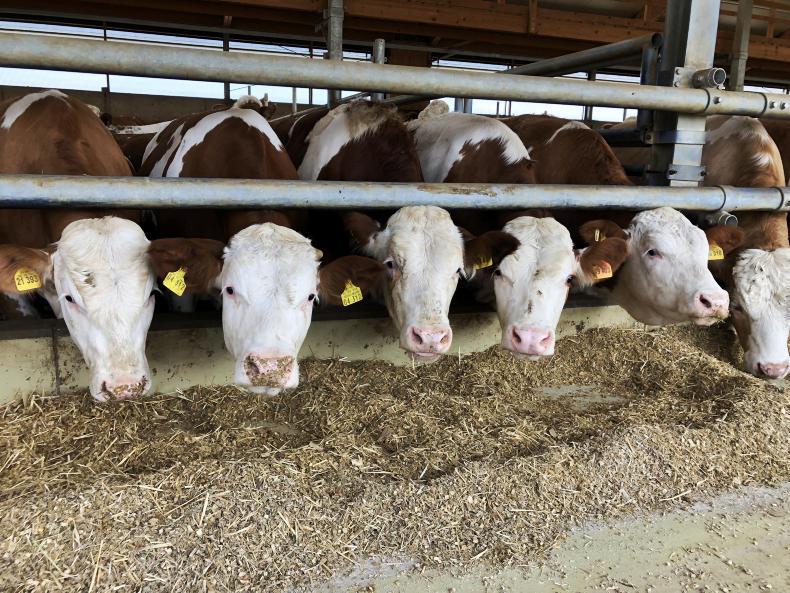
The layout of the shed consists of eight long pens, with a 27- to 30-head capacity each.
In terms of feed space, for every one animal that is feeding there will be 2.5 animals behind.
Feeding
The small feed space is not an issue because feeding takes place five times per day at regular intervals.
This is a fully automated process, which involves a feeder unit with an auger (similar to a diet feeder) suspended from a rail.
Powered by an electric motor, the unit travels along the rail in front of the feed barrier and distributes and pushes in the feed.
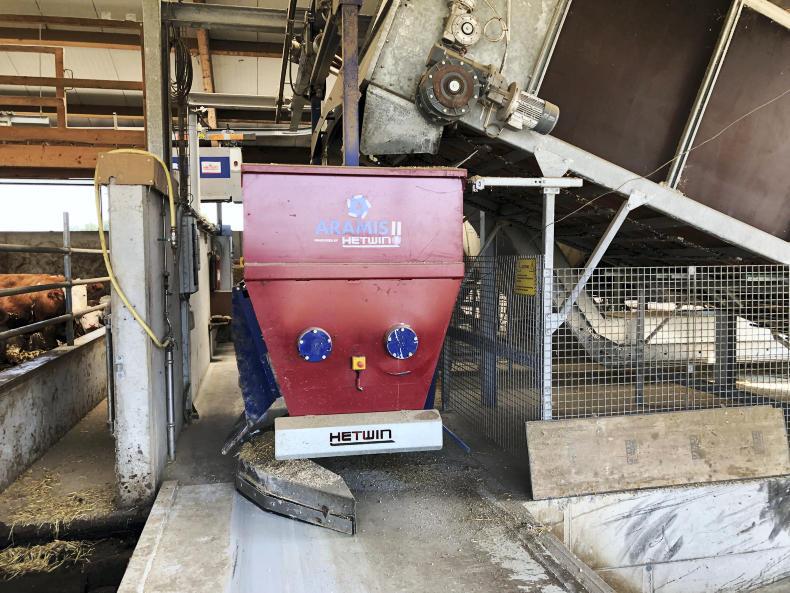
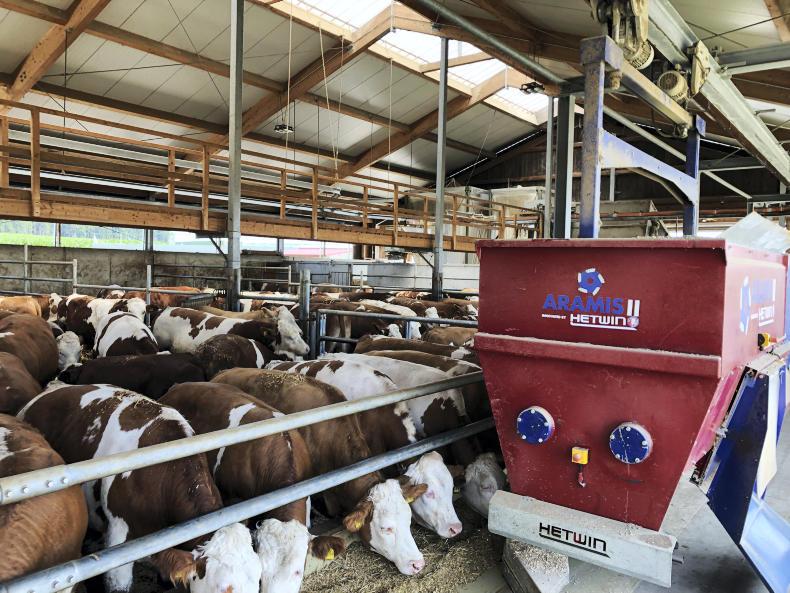
A hopper full of ingredients fills the unit before each feed so all as the farmer has to do is fill the hopper once per day.
The diet includes maize, rapeseed grind, cereals, minerals and straw.
Thirty-five hectares of maize are grown on the farm for feed. A further 10ha of maize are purchased.
The remaining 55ha of land on the farm is used to grow wheat, triticale and sugar beet, all of which is sold.
Bedding
Bedding is also fully automated. A unit is filled, travels around the shed above the pens on a rail, similar to the way the feeder moves.
This unit disperses the straw with a plate (like on a fertiliser spreader) and is programmed to allocate 2kg of straw per animal per day.
Visited a beef finishing unit outside Munich this morning. 160-180 Fleckvieh dairy bullocks and over 100 suckler CH/LIM cross bulls finished per year. Excellent cattle. Slaughter between 18-22 months. Bedding and feeding is fully automated. @FJBeef @Bordbia pic.twitter.com/ao1UzpOVms
— Matthew Halpin (@MatthewHalpin22) July 17, 2019
The shed is never cleaned out. The front feeding passage is cleaned by an automatic scraper.
The pens are sloped outwards toward the scraper, so gravity and animals walking on the dung pushes the material out towards the scraper.
All the bullocks are slaughtered and sold through the family butcher shop. Killing 3-4 bullocks per week to meet demand. People travel upto 50km to shop. German consumers increasingly willing to pay more for meat they can trust. €44/kg for dry aged T-bone here. pic.twitter.com/4N5lFlm3Tb
— Matthew Halpin (@MatthewHalpin22) July 17, 2019
As well as that, because the animals are on such dry feeding, and the weather is typically warm, the dung at the back is usually a dry, turf-like consistency and keeps the animals clean.
The total labour input is approximately 1.5 hours per day.
This farm visit was part of a Bord Bia study trip to Germany and Austria for all finalists of the Origin Green Farmer Awards.
For a full report on animal performance and the economics of the system, stay tuned to the Irish Farmers Journal in the coming weeks.






 This is a subscriber-only article
This is a subscriber-only article















SHARING OPTIONS: